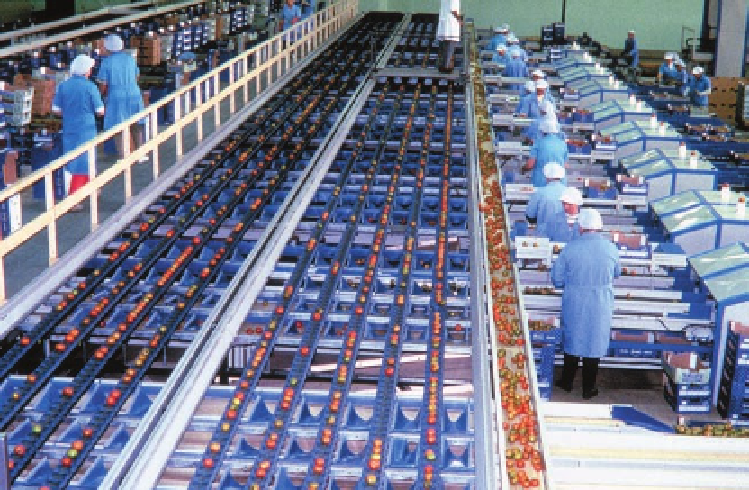Agriculture Reference
In-Depth Information
16.3
Standardization and
Classification
oxygen and CO
2
, maintain the desired gas
composition, within certain limits, and
extend the shelf life in combination with
low temperatures. It is used with fresh cut
products.
During the ripening process, fruits
generate several volatile organic com-
pounds (acids, alcohols, aldehydes), which
have a marked influence in the organolep-
tic characteristics of the fruit. These vola-
tiles usually have little influence on
respiration, except for ethylene. Ethylene
has an inducing effect on the ripening of
immature fruits in the majority of species,
speeding up their respiration and ripening,
without influencing the already ripened
fruits; for a long time it has been used
commercially to speed up ripening (for
instance, in the ripening of citrus and
bananas).
Other preserving techniques, such as
use of low or high pressure, or techniques
based on the use of microwaves or radiant
energy, for instance, are not widespread,
and some are in the development stage
(Dolado, 2000).
Chapter 15 discusses the technical
aspects of vegetable postharvest manage-
ment in more detail.
Classification and calibration allows for
describing the products without the need to
see them, and they represent the basis of
trade at a distance, without the physical
presence of the commodities (Photo 16.1).
Classification allows for the elimination of
all the inappropriate products and for
grouping them according to a pre-fixed
quality pattern (size, colour, etc.).
The packaging of products, using a
wide variety of materials, allows the prod-
ucts, which have already been classified,
to get to the consumer in the right condit-
ion through the distribution chain. Pre-
packaging in small units, of the size of buy-
ing unit used by the consumer, is widespread
among fresh horticultural products; in this
way its 'functionality' is improved by adapt-
ing its size to the ration demanded by the
consumer.
Traditionally, quality improvement is
based on product standardization. This is
understood as the set of activities whose
aim is to ensure that the agricultural prod-
ucts exceed a minimum level of quality and
be presented to the market classified in
Photo 16.1.
Classification and calibration are the basis of trade at a distance, without the physical
presence of the commodities. The image shows a tomato classification machine.

